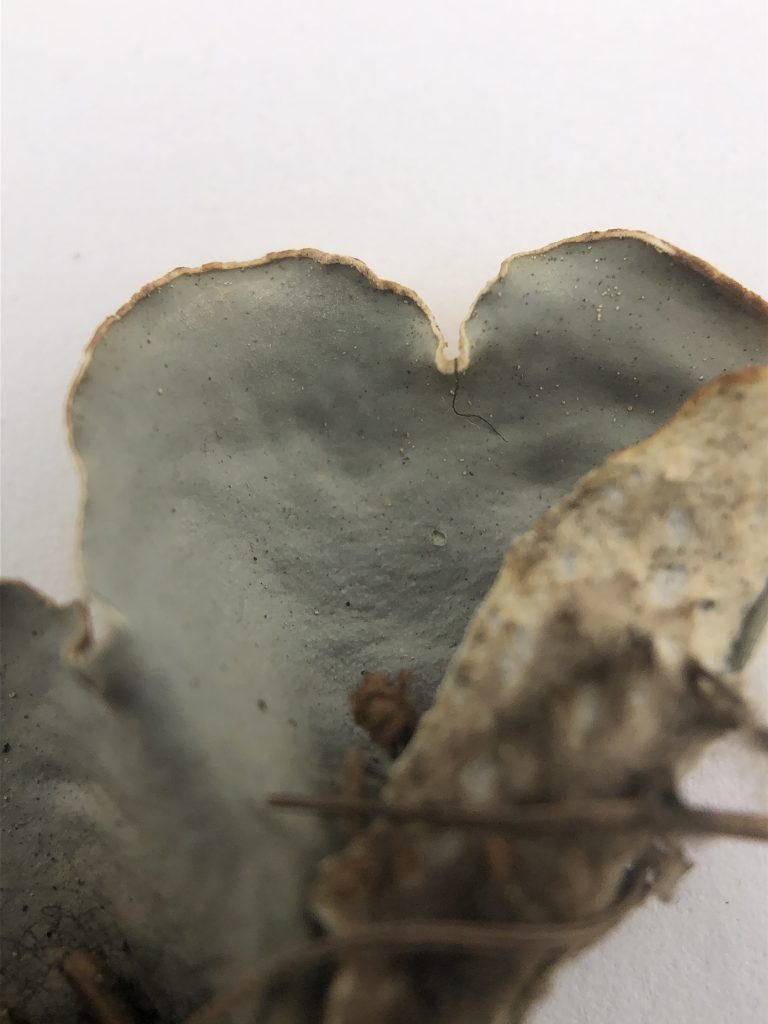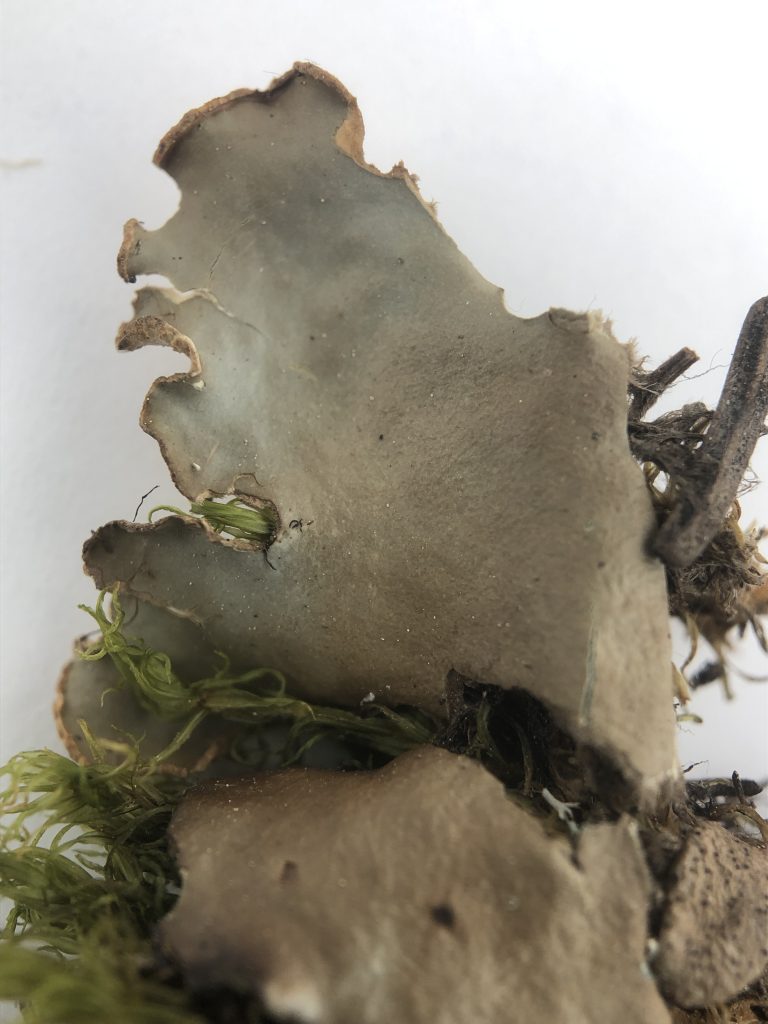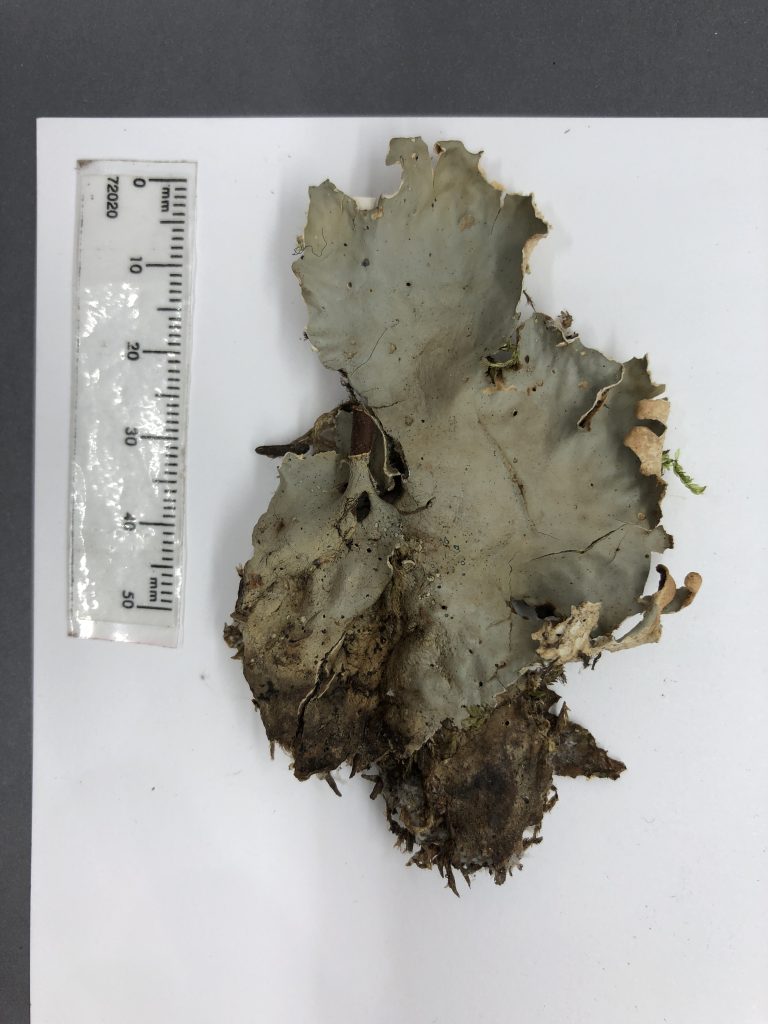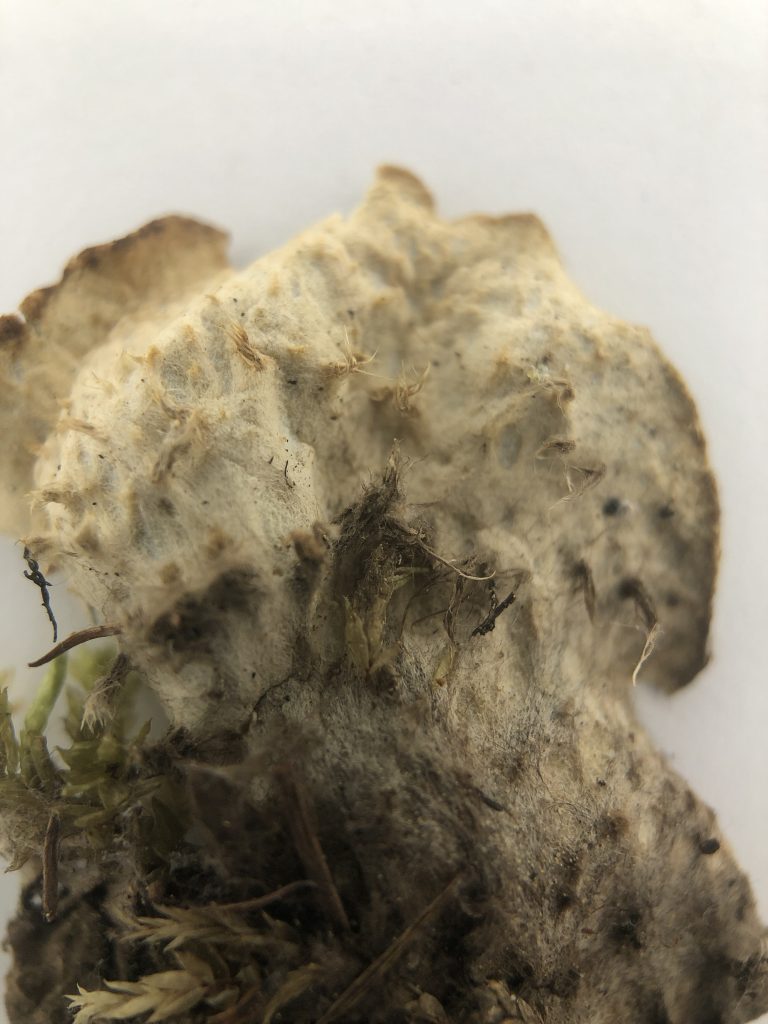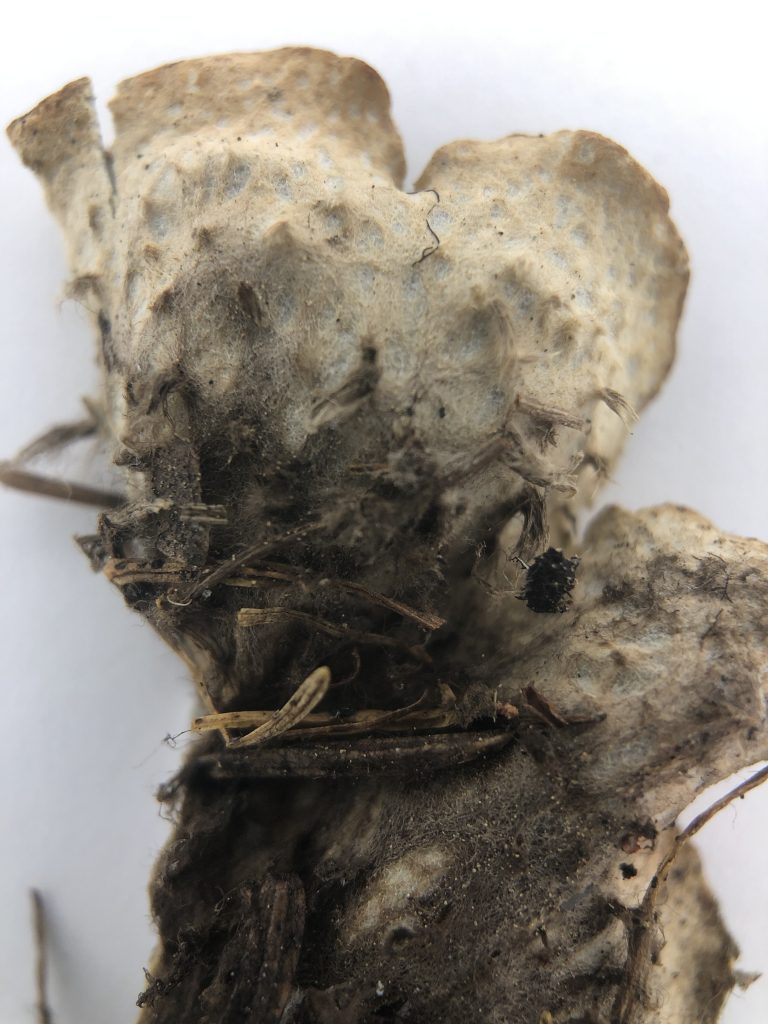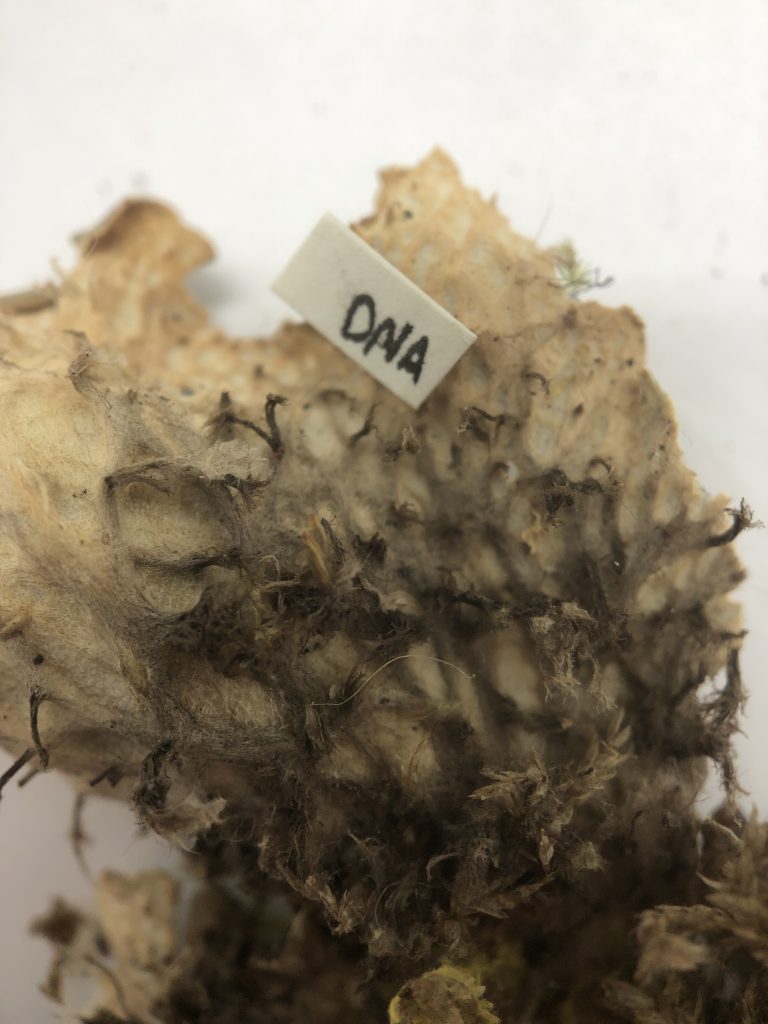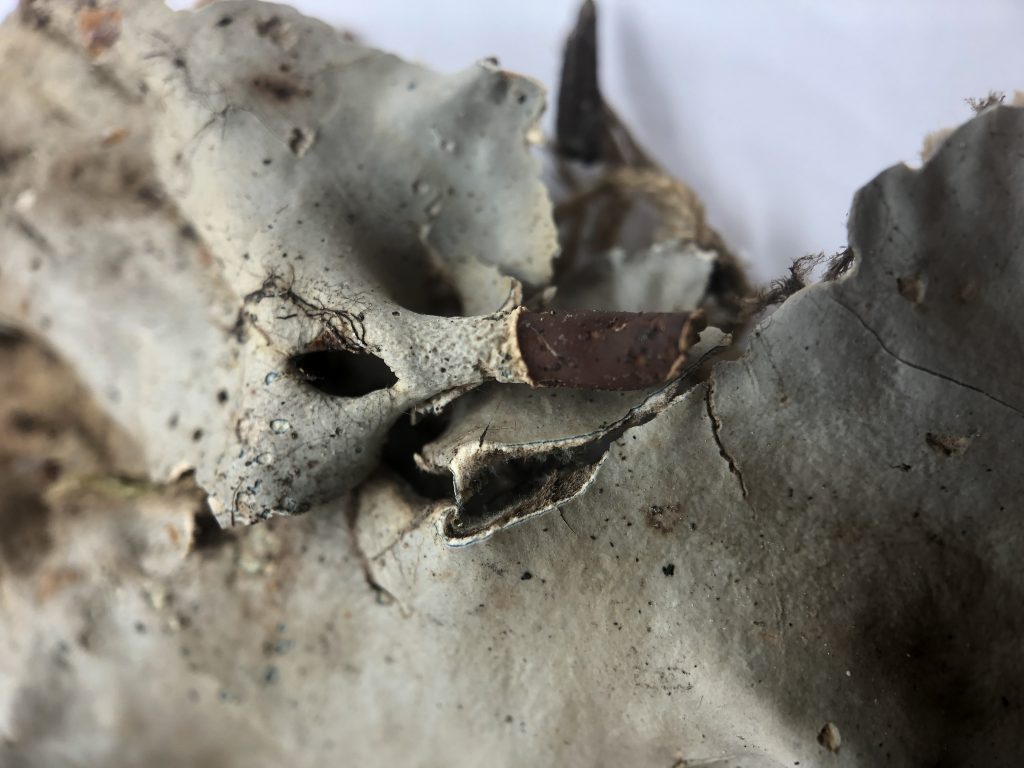Peltigera appalachiensis Magain, Miądl. & Sérus., 2023 (synonymous with Peltigera neopolydactyla in Alberta)
| Common name | Carpet Pelt |
|---|---|
| Code | PELTAPP |
| Field Characters | Large leafy bipartite cyanolichen. Thalli to 12 cm across, composed of large, wide, almost unbranched individual, overlapping, thin lobes. Upper surface quilted, plane with slightly upturned or ruffled lobe tips. Upper cortex grey to grey-brown when dry, blue-grey to jade green when wet, dull to shiny, lacking tomentum, sometimes with light pruina. Lower cortex lacking, lower surface covered in a network of narrow, flat, dark brown veins and irregular, oval interstices, with abundant simple to fasciculate rhizines. Apothecia orange-brown to red-brown, tightly inrolled, often abundant, with multiple apothecia emerging from the same wide lobe. Vegetative propagules lacking. |
| Similar species |
Peltigera occidentalis: intergrades and difficult to discern where it overlaps in range from P. appalachiensis in Alberta. Magain et al. (2023) suggest that P. occidentalis has a more rigid, robust habit, and oval, regular interstices. These traits need to be tested locally. Of the 42 specimens genetically determined as P. occidentalis, most were originally identifed as P. neopolydactyla.
Peltigera polydactylon: lobes narrower, more deeply divided, with a single apothecium per ascending lobe, typically also lobulate. Much rarer in Alberta, often in riparian forests. |
| Ecology | On moss in mature to old-growth black spruce forests. Present in foothills, boreal, and shield sites, rare in the mountains and parkland, and absent from the grassland. |
| Chemistry | Not investigated locally. Magain et al. (2023) documented tenuiorin, methylgyrophorate and gyrophoric acid, as well as at least 3 triterpenes (peltidactylin, zeorin and ±dolichorrhizin) by TLC. |
| Molecular support |
High, 121 sequenced specimens all fall witihin a single well-supported molecular clade recently described as P. appalachiensis.
What was originally conceived as a single wide-spread species was delimited using molecular data and split into three species, P. appalachiensis, P. neopolydactyla and P. vitikainenii. They differ in range with P. vitikainenii more common in boreal Europe and Asia, and somewhat in chemistry, with P. neopolydactyla containing a single triterpene, zeorin. However, confident diagnosis likely requires molecular data, the fungal barcode locus, ITS (Magain et al. 2023). For that reason, older descriptions should be used with caution. |
| Links | |
| Gallery |
- Peltigera appalachiensis upper cortex, ABMI genetically confirmed collection
- Peltigera appalachiensis upper cortex, ABMI genetically confirmed collection
- Peltigera appalachiensis upper surface, ABMI genetically confirmed collection
- Peltigera appalachiensis lower surface, ABMI genetically confirmed collection
- Peltigera appalachiensis lower surface, ABMI genetically confirmed collection
- Peltigera appalachiensis lower surface, ABMI genetically confirmed collection
- Peltigera appalachiensis upper surface and apothecium, ABMI genetically confirmed collection

